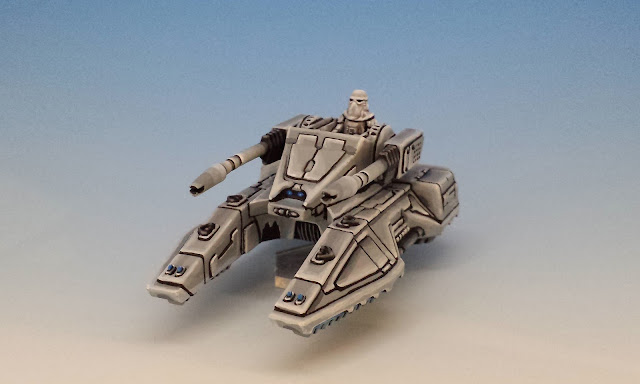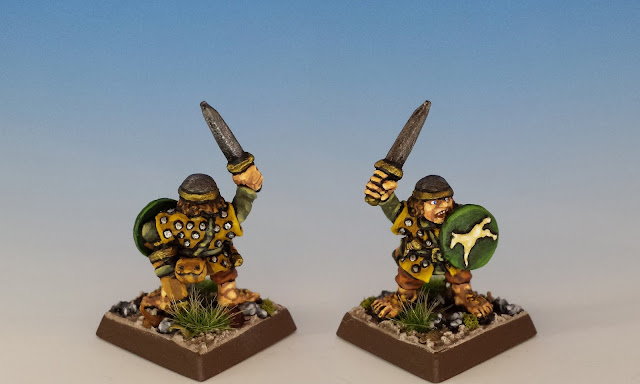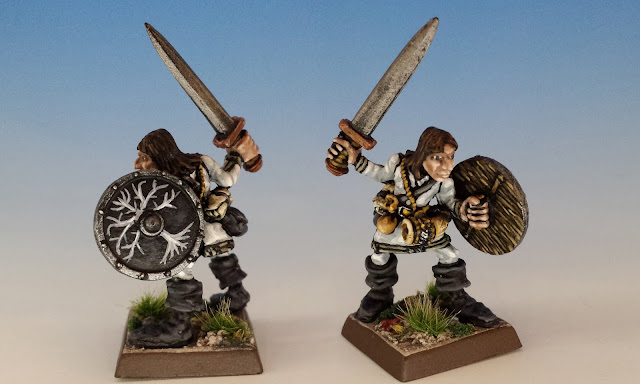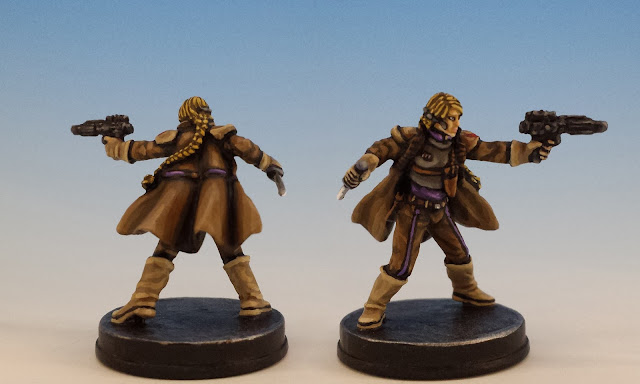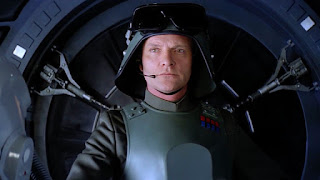Here's the 3rd and final wave of painted miniatures for Return to Hoth, the latest expansion for Star Wars Imperial Assault (here are the first and second posts). Now I can settle down to some Hoth based games: skirmishes with my friend Nicos, and the campaign mode with myself (which may be a little lame since the campaign isn't designed for solo play -- but I love playing solo and seeing how the story of the campaign unfolds).
Return to Hoth features canonical miniatures (Snowtroopers and Wampa Monsters) as well as two models from the larger Star Wars universe: the HK-Assassin Droids and the SC2-M Repulsor Tank.
 |
| The HK Assassin Droid |
Recently I've had a number of people mention that my painting style reminds them of cel-shading (i.e. blocks of graduated colour rather than seamless shading). If this trait is normally noticeable, it is dominant in these monochromatic miniatures. I used to feel quite ambiguously about this painting style of mine. Shading with ink glazes are much more fashionable, often beautiful and (from what people tell me) easy to employ with just a little practice. But shading with glazes and washes has never come naturally to me.
Although I'm continuing to experiment with glazing, I've decided to embrace my cel-shading ways. Since it comes naturally from my brush, it seems to be an expression of something inside of me. It may make my miniatures look clunky, but at least they are clunky in a way that it uniquely mine. After all, miniature painting should be an art, not a craft... individual style has to count for something.
Well, that's what I'm telling myself.
I should also add that I think that way I photograph my miniatures contributes to the appearance of cel-shading. I shoot them at very close range and flood them with messianic quantities of light. I like the way this technique makes the miniatures look (even though it tends to expose even tiny mistakes). But when using the miniatures on the table-top, where the light is more terrestrial, the shading gradients aren't half so noticeable.
In any case, I'd be very interested to hear if anyone else has found that they have a certain painting style that comes naturally will-thee or nil-thee. Please let me know... And otherwise, thanks for looking!
All these new models can now be found in my galleries of the complete range of Star Wars Imperials, Rebels and Mercenaries.
Cheers!
PS -- If you like creative conversions for Imperial Assault, check out Suber's modifications to Darth Vader and Luke Skywalker. By subtly adjusting their positioning, he's added a whole new level of movement to the miniatures. And as always, his paint jobs are great.


